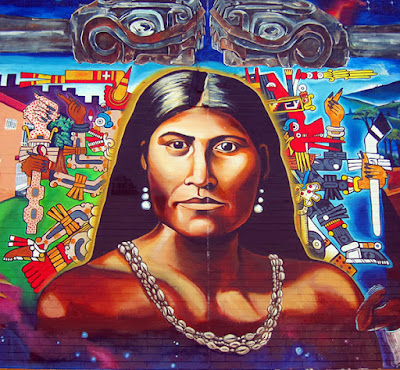Maize: Our Identity, Our Food | Photo Exhibit of Indigenous Corn Farmers Featured at UN Headquarters
PRESS
RELEASE - April 26, 2018
Magnificent Photo Exhibit of
Indigenous Corn Farmers and Protectors of the Americas at United Nations Headquarters (running through May 22)
(New York
City) Maize: Our Identity, Our Food is a major traveling photo exhibit launched April 20th and
will be on display at the entrance of the United Nations Headquarters through
May 22, 2018. Maize has sustained life
on earth for many centuries. For communities across the Americas, maize is the
center of creation and is called ‘Mother’. She is not just a food, but a
relationship tied deeply to community health and identity. Her cycle of life
has enabled a way of life based on coexistence, harmony, reciprocity and
respect.
We recognize ourselves in maize. As the sacred book of the Maya, the Popul Vuh
says, our flesh is made of maize, we are women and men of maize. It is because of this that we envisioned a
powerful image of maize uniting peoples across borders and throughout Nations. When we lose traditional seeds and foods, we
lose the threads of cultural identity and the foundations of community health.
Traditional seeds and foods are being replaced by hybrids and transgenics.
Public policies displace our peoples from their lands. Non-traditional foods
have created unhealthy communities.
The exhibit
displays images of maize seed keepers and knowledge holders from nations spanning
north to the south; from Onondaga in northern New York, USA all the way down to
Mapuche communities in far southern Chile. Among the indigenous nations
featured in the exhibit are: Kichwa Norte and Kichwa Sur (Ecuador), Tesuque
Pueblo (New Mexico), Mixtec, Zapotec (Oaxaca),
Mapuche (Chile), Huichol (Nayarit, Zacatecas), Quechua (Peru), Mohawk (New
York), Cuchumatanes (Guatemala), Seneca
and Onondaga (New York), Zuni Pueblo
(New Mexico), Maya (Chiapas), Nación Likan Antay (Chile), Laguna Pueblo (New
Mexico), Raramuri (Chihuahua), Tzotzil (Chiapas), and Oneida (Wisconsin).
The
protection and defense of maize is intimately tied to the defense of territory,
the self-determination and autonomy of Indigenous communities and nations who
continue to maintain the biocultural diversity of maize upon which we all
depend. Alianza Milpa is bringing this topic to the UN to focus on the
interconnectedness between seeds and territory and assist delegates to learn
about the strong cultural relationship to maize and the intersection between
identity, territory and culture. For indigenous peoples maize plays a central
role in the implementation of the UN Declaration on the Rights of Indigenous
Peoples and is at the center of our vision of the UN Sustainable Development
Goals.
The exhibit
and side events are organized by Alianza
Milpa, an international organization representing thousands of native
farmers and dedicated to territorial autonomy, food sovereignty, and strengthening
traditional knowledge.







Comments
Post a Comment